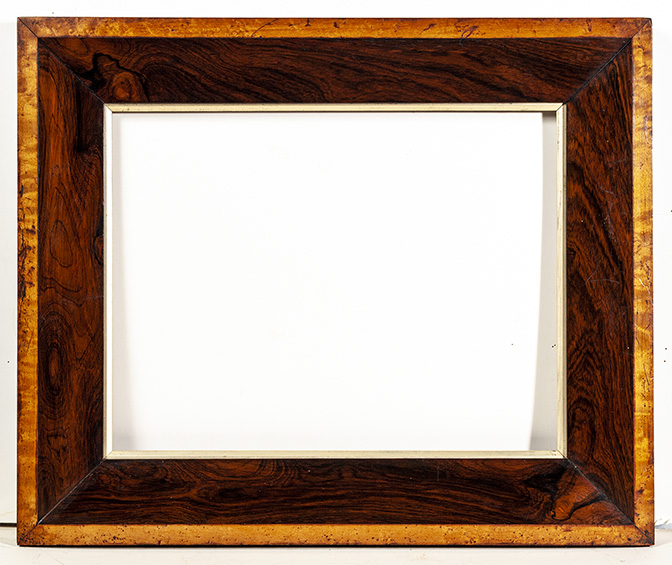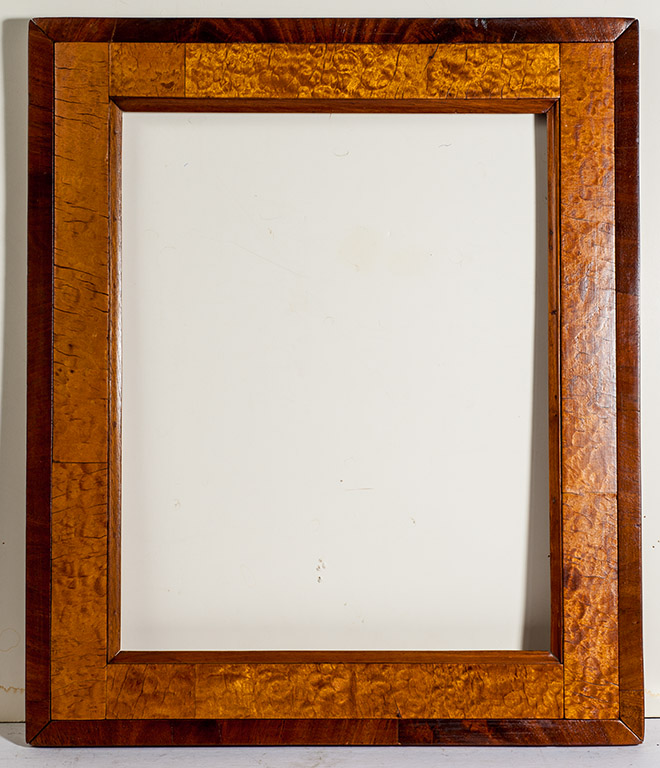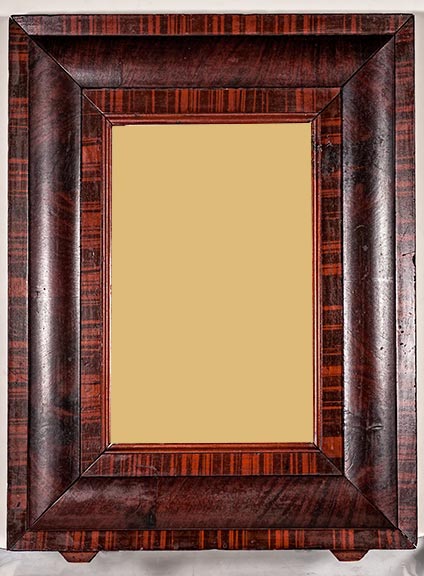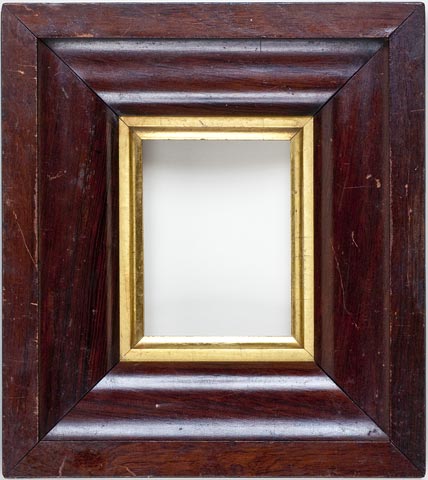
Page 2 - 1850s to 1860s
|
|
 |
Best - A very unusual and attractive, large American ripple frame varient with a composition repeating ripple pattern from about 1860. This is the first that I have seen of this style of ripple. It is 19 x 24 3/4 inches o.d. and has a 16 x 22 inches pic. size. |
 |
A superb 1855 walnut frame with a gold inner crosswork that would hold 4 quarter plates or CDVs. It is 10 x 12 inches od. and has (4) 3 1/4 x 4 1/4 inches pic. size. |
  |
Best - An unusual Mahogany, multi-image frame with crisscross corners, white porcelain beads, and a mirror, that would hold 30 CDVs. It is 24 3/4 x 31 3/4 inches od. and has (24) 2 1/2 x 3 3/4 inch pic. size. The top row is a touch shorter at 2 1/2 x 3 5/8 inches. |
A pair of ca.1850, beautiful, Half plate, faux tortoise daguereotype frames. Each is 8 3/4 x 10 1/4 inches od. and has a pic.size of 4 1/2 x 5 3/4 inches.
Best - An 1850s English rosewood piece with exceptional graining and a gilded liner. The frame is 15 1/4 x 17 1/2 inches outside and holds an image that is 10 3/4 x 13 inches. Better - A mid-1850s gutta percha photo frame with an ambrotype of a sign painter. The frame is 5 1/8 x 6 1/2 inches od. and holds an image that is 3 1/4 x 4 inches.
Best - I constantly look for unusual frames and this one is a beauty. An 1860s rosewood piece with exceptional graining, a gilded liner and a birdseye maple outer frame. The frame is 15 1/2 x 18 3/4 inches with a pic. size 11 1/4 x 14 1/4 inches pic. size. Thanks to Tom for making it available to buy. Best - A ca.1865, Curly maple veneer, middle frame and mahogany outer frame and sight. The frame is 16 1/2 x 19 1/4 inches od. and has a 12 x 15 inches pic. size.
Better - 1860s gutta percha with a mourning drape design. It was made to hold a CDV image. The carte-de-visite was introduced in the very late 1850s. By 1860, it was the photograph format of choice and images were made by the millions. Better - 1860s gutta percha (also called thermoplastic) with a flower design. It was made to hold a CDV image. The 1850s brought in a refinement of the earlier styles. You will find that many antique dealers use the term "ogee" too freely when describing wood-veneer frames. Actual ogee pieces have an "S" curve in the wood.
Better - A gilded, wood frame from the 1850s. These are described as "honey-colored" or "lemon-gilded" frames. They are actively sought by collectors. 11 3/4 x 15 3/4" od.





































